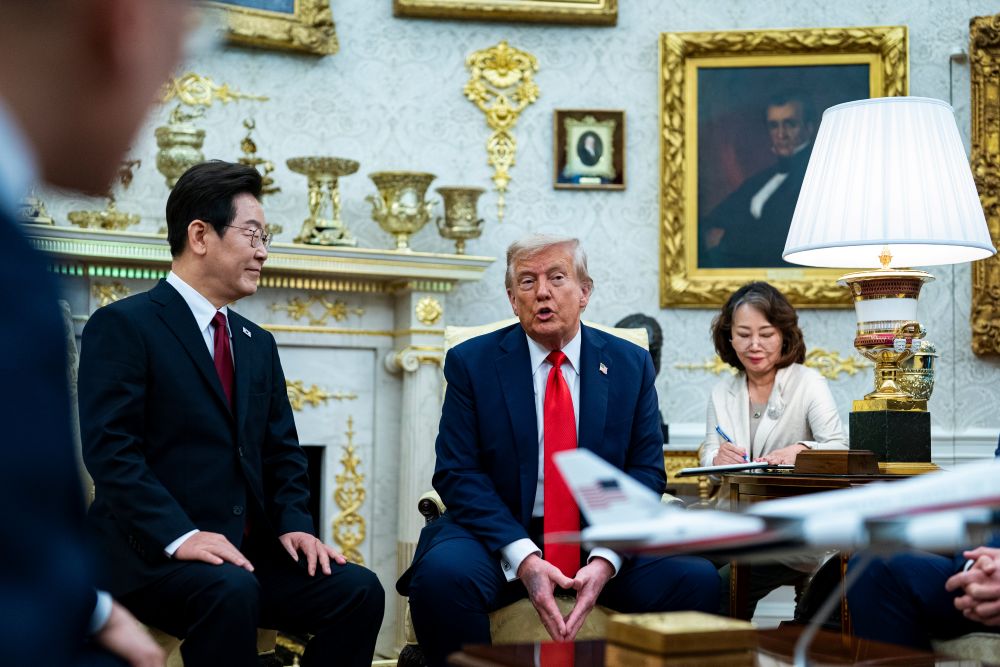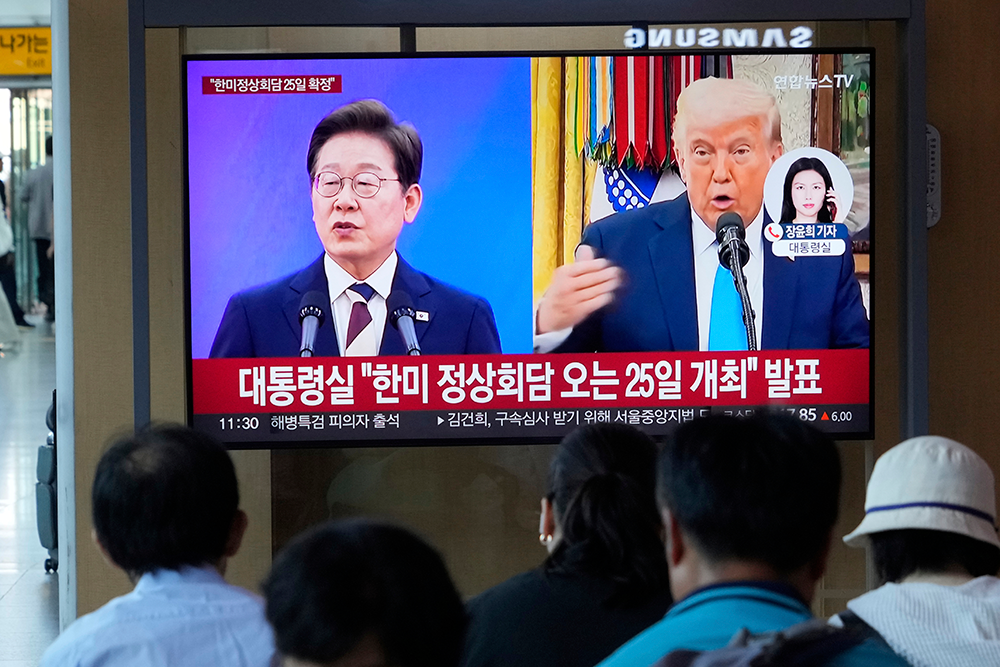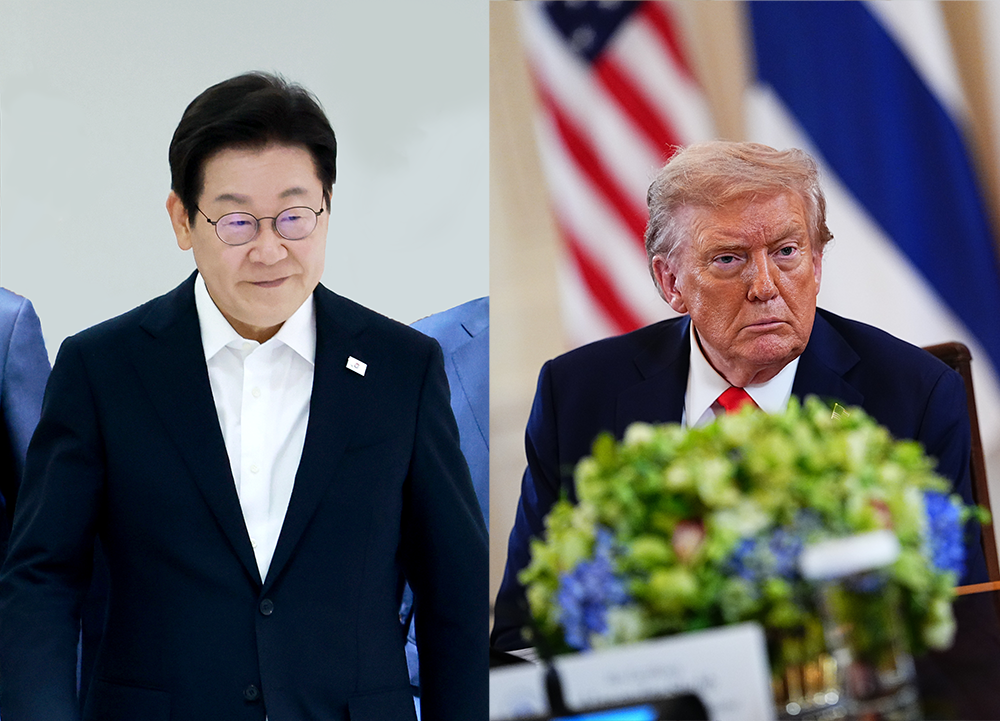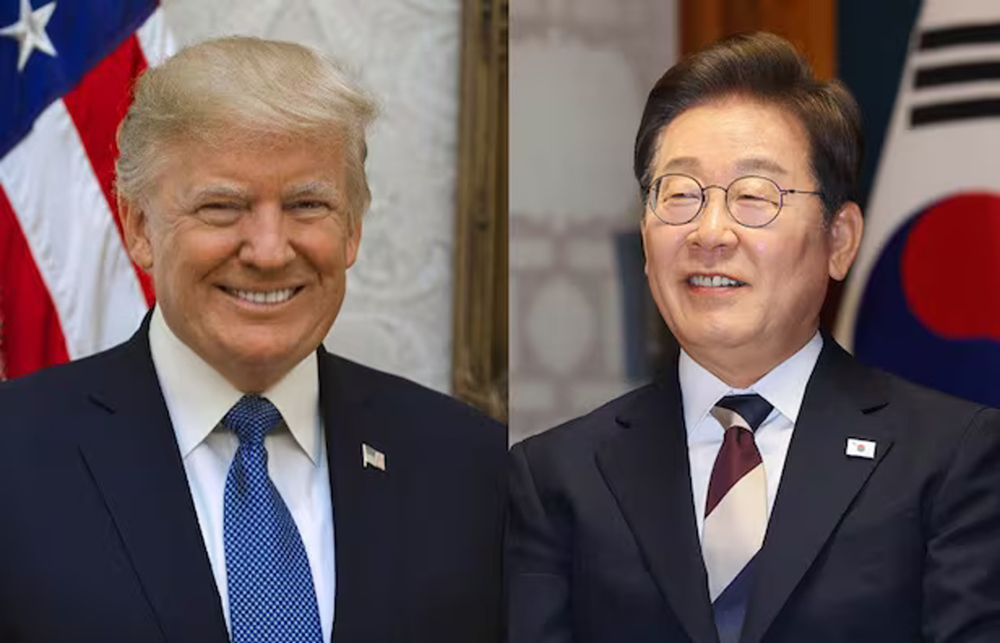
- #South Korea
- #US Foreign Policy
- #US-ROK Alliance
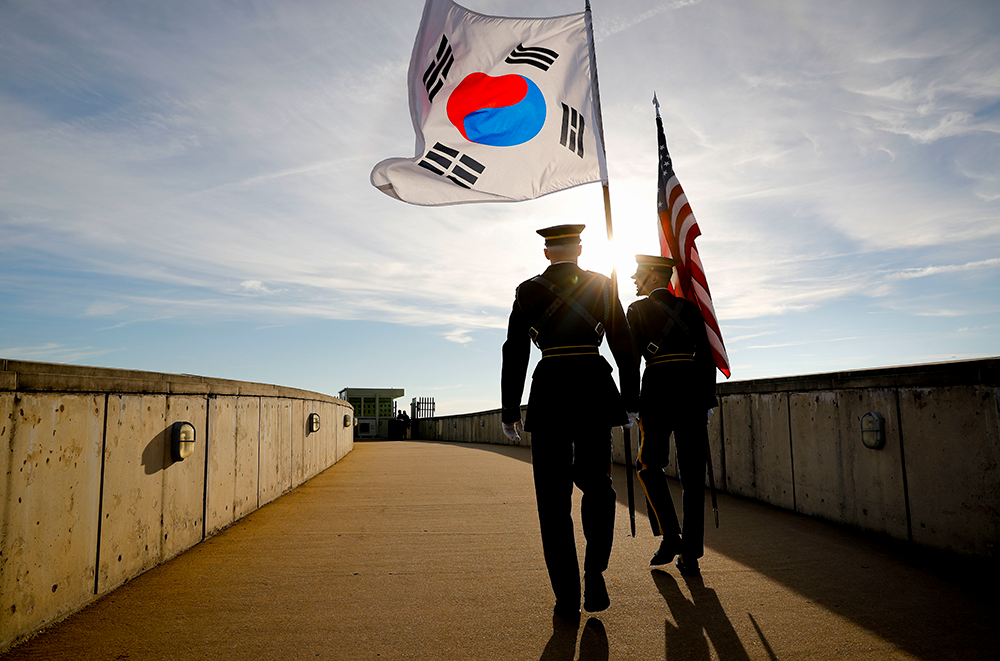
Key Takeaways:
- Trump is dealing with a different kind of progressive South Korean government in his second term.
- Ambition could backfire. The leaders should focus on reaffirming long-standing alliance principles rather than details on thorny security and defense issues.
- Strategic flexibility, burden sharing and details on modernizing the alliance should be dealt with between working-level officials in both governments.
United States President Donald Trump and South Korean
President Lee Jae-myung will meet for the first time on August 25 in
Washington, DC. Trump and his first administration have worked with a
progressive South Korean government before. However, it is not inevitable that
the alliance is in for another bumpy ride simply because there is another
progressive ally in Seoul. The new South
Korean President Lee Jae-myung represents a departure from the traditional progressivism of his predecessors Moon Jae-in (2017-2022) or even Roh
Moo-hyun (2003-2008). In other words, Lee may not possess deep, ideological
convictions when it comes to dealing with Japan and the United States, although
his critics claim he is “pro-China” for comments made in the past and
“pro-North Korea” for allegedly transferring funds illegally to the regime when
he was a provincial governor.
In fact, those around Lee claim that he is a foreign
policy novice. Some who have worked closely with him even say “he does not care
about foreign affairs,” meaning that his priority is domestic policy and
domestic politics. Lee is also a self-proclaimed pragmatist, which will
certainly be tested in his meeting with Trump and throughout his presidency.
The most notable difference from the Moon government
is that half of the political appointees on Lee’s national security team are seen
as pragmatic and half are considered ideological or traditional progressives.
He has appointed pragmatic, career diplomats to lead the country’s national
security and foreign policy. If Lee delegates foreign policy to them and
accepts their recommendations, then South Korea’s foreign policy will exhibit
more consistency than divergence with a conservative approach. This means that,
unlike during the Moon government, the US-Korea alliance relationship will
likely be quite smooth. However, Trump’s unpredictable style could tip the
balance.
The first indication of such consistency is Lee
stating before and after his election that his foreign policy will be based on
the alliance with the US and trilateral cooperation with Japan. The architect
of such approach is evidently National Security Advisor Wi Sung-lac who is
respected by the foreign policy community in Seoul. He is known for his
pragmatic, strategic mind and could have easily led foreign policy in a
conservative administration. Wi has a strong ally on the team with
newly-appointed Foreign Minister Cho Hyun. Their main challenge will be
grabbing the ear of their president fully as Lee’s national security team also
has ideological officials leading the country’s spy agency and Unification
Ministry as well as traditionally-progressive mentors who could be influential
without assuming an official role.
These three ingredients, if utilized properly, could
portend a smooth working relationship with the United States and present more
opportunities—perhaps even historical ones—than challenges for the alliance
during Trump’s term and for Seoul’s own foreign policy. Washington, meanwhile,
may not currently have a Senate-confirmed senior official with the kind of
gravitas South Koreans would like to lead America’s Korea policy. But the State
Department and Defense Department have strong working-level officials who
understand alliance issues and the stakes that are involved in managing thorny
factors in them.
US Strategic Flexibility and Alliance
Modernization
While the summit date was suddenly set when Washington
and Seoul struck a deal on Trump’s tariffs, the months leading up to it were
shrouded with suspense and concern in Seoul. South Koreans will zero in on if
and how the two leaders use the terms “(US military) strategic flexibility” and
“alliance modernization,” which are being pushed by Trump’s administration. At
a minimum, Trump will likely want to receive a financial pledge that Seoul will
contribute more towards hosting US troops.
Lee will likely seek to focus their conversation on
increasing South Korean military expenditures and avoiding a conversation about
strategic flexibility, which entails the possibility of redeploying US troops
stationed in South Korea flexibly to other conflict zones (i.e., Taiwan
Strait). In fact, both leaders should allow their teams at the working level to
hash out details on strategic flexibility and how to modernize the alliance
with Seoul assuming more responsibility for deterring North Korea.
Trump’s comments about allies and “free riding” since
his first presidential term have long primed South Koreans to expect him to
demand more military expenditures for Washington’s defense commitment to South
Korea. They saw Trump elicit pledges from NATO allies to raise defense spending
to five percent of their gross domestic product (GDP). Seoul currently spends
about 2.8
percent of GDP. Seoul appears willing to increase up to
approximately 3.5 percent while potentially making additional contributions in
kind, amounting to a total increase of about 1.5 percent.
Instead, South Korean concern has been driven by
Trump’s nonchalant comments about wanting to withdraw US military forces from
South Korea due to costs and comments made by Under Secretary of Defense
Elbridge Colby before and after his confirmation. Colby believes that US troops
based in South Korea should now be focused primarily on deterring China, rather
than North Korea because Washington sees Beijing as a “pacing threat.”
The Trump administration is also seeking to modernize
the alliance so that Seoul would focus more on deterring North Korea—which
includes increasing expenditures on national defense capabilities for
deterrence—while Washington focuses more on China in peacetime. In other words,
Seoul would be sharing more of Washington’s security burden (known as “burden
sharing”), which would include Seoul spending more to strengthen its own
capabilities. Burden sharing is different from a cost-sharing agreement called
the Special Forces Measures Agreement (SMA), which has long been a challenging
negotiation to increase South Korea’s share of the costs to host USFK mainly
due to Seoul’s need to receive National Assembly approval. The allies have made
a prudent decision to negotiate burden sharing separately from SMA
negotiations.
Colby has also been known to want explicit support for
strategic flexibility and South Korea’s military involvement in a potential
conflict. Seoul is firmly opposed to these two scenarios, let alone allowing
them to be discussed between the two presidents.
US rationale behind seeking alliance modernization and
strategic flexibility is that US Forces Korea (USFK) and the alliance need to
contribute to America’s central security challenge too (i.e., China), just as
USFK has been focusing on South Korea’s existential threat of North Korea. It
is particularly difficult to argue otherwise when South Korea’s military
capabilities are the strongest they have ever been since the 1950 Korean War
(although its military readiness is a separate matter). After all, the two countries
have a Mutual Defense Treaty (1953) and not a unilateral one. The Treaty, which
provides the legal and fundamental framework for US troops stationed in South
Korea, does not specify North Korea as the “potential
aggressor” nor does it specify any aggressor against which the
allies must deter
armed attack.” This means that the mission of USFK is
not limited to deterring and defending US allies against only North Korea in
the Pacific.
The US National Defense Strategy is expected to be
complete in late August or September with a Global Posture Review to follow it.
Due to the “pacing threat” of China, America’s global military posture is
expected to focus more on its navy and air force rather than its army. This
means that the number of American troops stationed in South Korea could
naturally decrease with, e.g., the deployment of modern weapon systems like
fifth generation fighter jets, which require less “manpower” to operate them.
In this context, military capability is certainly more important
than the number of American soldiers in Korea. Still,
Seoul should seek to sustain a sufficient number of US troops that can deter
and immediately fight Pyongyang. US troops are protecting both South Koreans
and a large American expat community living there.
For Washington, strategic flexibility today means that
USFK’s posture during peacetime will continue to be to deter North Korea while
designating a small portion of it to maintain a deterrence posture against
China during peacetime. It also means that during wartime, a portion of USFK
could be deployed as necessary to a conflict zone. South Koreans fear this
scenario would leave a security vacuum on the Korean Peninsula and hand North
Korea an opportunity to provoke or even invade the South again.
The concept of strategic flexibility is not a new one.
In 2003, Washington first broached the topic with Seoul and, after almost a
year of negotiations, the term appeared officially in a 2006
Joint Statement between Secretary of State Condoleezza
Rice and Foreign Minister Ban Ki-moon. Such discussions came against the
backdrop of the September 2001 terrorist attacks on the US and the Iraq War,
which led to Washington reorienting its global military posture to deal with
its top security threat at the time. As a result, the Bush administration’s
Global Posture Review led to a reduction of USFK from its previous 37,000
troops and redeployment to the Middle East.
Rice and Ban confirmed strategic flexibility to mean
that “The ROK, as an ally, fully understands the rationale for the
transformation of the US global military strategy, and respects the necessity
for strategic flexibility of the US forces in the ROK. In the implementation of
strategic flexibility, the US respects the ROK position that it shall not be
involved in a regional conflict in Northeast Asia against the will of the
Korean people.”
South Koreans were certainly anxious about the troop
reduction. However, Washington’s decision and President Roh’s agreement to send
Korean troops to Iraq were less controversial than today with China. Korean
soldiers deployed to Iraq were also medics and combat troops for security and
reconstruction missions in non-combat zones.
Metrics for Success
A successful summit would focus less on details
regarding security, defense and trade issues. Instead, the two presidents
should reaffirm long-standing alliance principles. Seoul should refrain from
presenting Trump with a long, detailed list of asks and discussion topics
because their efforts could backfire. Instead, it should deal with sensitive
issues and specific demands at the working level of the US government.
Lee could express gratitude for US involvement in the
Korean War and commitment to defending South Korea against regional threats. He
could remind Trump of the importance of USFK’s role in deterring and
potentially engaging North Korea militarily because a Taiwan contingency could
expand into a simultaneous conflict on the Korean Peninsula that puts American
expats’ lives at risk. Lee could seek reaffirmation of the US defense commitment to
South Korea while pledging to spend more on military expenditures and the procurement
of advanced weapon systems. He could also stress that Seoul should be consulted
before Washington strikes any future deals with Pyongyang, and that any
agreement should be advantageous to Seoul and the alliance’s interests.
Trump, meanwhile, has a propensity to go off script,
but he should still avoid trying to secure an explicit agreement about US
strategic flexibility and South Korean role in a potential Taiwan or South
China Sea contingency. Their Joint Statement does not necessarily need to
mention “strategic flexibility,” but if it must, then it would be sufficient to
retain the same language used in 2006. After all, both US strategic flexibility
and South Korea’s direct or indirect involvement are inevitable. If Trump gives
Lee a hard time, Lee’s foreign policy professionals risk losing face,
potentially resulting in an altered foreign policy approach from Seoul’s
current trajectory.
Trump and Lee could reaffirm their country’s
commitment to the alliance amid shifting security dynamics and agree to
modernize it in broad terms to meet the needs of today and the future. They
could also reaffirm that diplomatic engagement with North Korea is the desired
approach while reaffirming the importance of deterrence and North Korea’s
denuclearization.
The two leaders should also wait to discuss details of
their framework agreement on trade issues until after their teams have
sufficiently worked through the necessary measures to implement it.
Finally, another marker of success would be if the two
presidents agree to continue implementing their countrys' 2023 Summit Joint
Statement on deepening and expanding the alliance across all domains; the 2023
Washington Declaration on US extended deterrence and South Korean
nuclear-weapons abstinence; and the 2023 Camp David trilateral summit
agreements on expanding trilateral cooperation.
Ambition could backfire. The alliance would benefit
from an amicable and respectful summit that focuses on key principles,
especially when it will be the first meeting between two unpredictable leaders.

Duyeon Kim is an Adjunct Senior Fellow with the Indo-Pacific Security Program at CNAS based in Seoul. Her expertise includes the two Koreas, nuclear nonproliferation, deterrence, arms control, East Asian relations and geopolitics, and U.S. nuclear policy. She is a Columnist for the Bulletin of the Atomic Scientists and a Visiting Professor at the Yonsei University Graduate School of International Studies teaching “Regional Security Regimes in Europe and Asia;” “Deterrence and Negotiations with North Korea: Theory and Practice;” and “AI, Nuclear Weapons, and Strategic Stability.” She has a Ph.D. from Korea University, an M.S. in Foreign Service from Georgetown University, and a B.A. in English/Literature from Syracuse University.
